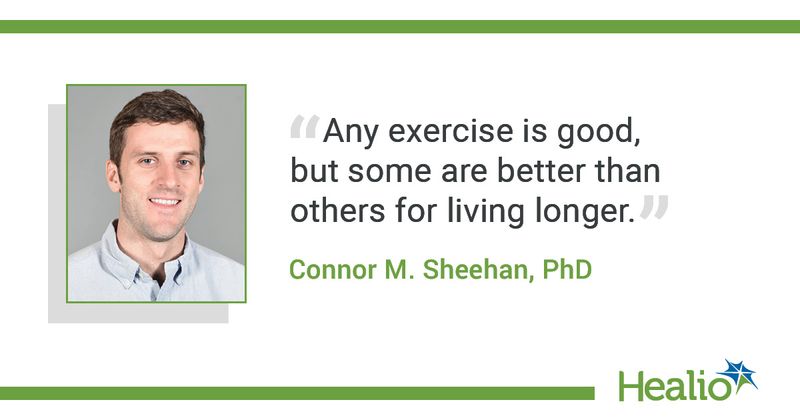Any exercise benefits longevity, but some types are better than others
Although some types of exercise are more beneficial than others, any form of exercise is better than none for longevity, according to research published in Medicine & Science in Sports & Exercise.
“Walking, running, aerobics, stretching, weight lifting, stair climbing were all associated with longer lives, even after statistically controlling for demographic characteristics, socioeconomic characteristics, health behaviors, and baseline health,” Connor M. Sheehan, PhD, an assistant professor at the T. Denny Sanford School of Social and Family Dynamics at Arizona State University, told Healio Primary Care. “That is, any exercise is good, but some are better than others for living longer.”

Sheehan and colleagues collected data from adults who reported the types of exercise they participated in during the 1998 National Health Interview Survey and were prospectively followed through the end of 2015 for mortality. A total of 26,727 adults were included in the study, with 4,955 deaths occurring during the 17 years of follow-up.
Those included in the study reported information on exercise participation, frequency, duration and intensity of 15 different types of exercise and sports, including walking, running, cycling, stair climbing, baseball, basketball, volleyball, football and golf.
The researchers calculated the volume of each type of exercise using the ratio of working metabolic rate relative to the resting metabolic rate (METs) for each exercise reported in the survey, which were based on participants’ self-reported changes in heart rate and breathing.
After adjusting for total volume of other exercises and confounders, including demographic factors, socioeconomic status and health behaviors, Sheehan and colleagues determined that lower risks for mortality were associated with walking, aerobics, stretching, weight lifting, cycling and stair climbing.
They also determined — after adjusting for participation in all exercise types and cofounders — that uniquely low risks for mortality were associated with stretching (OR = 0.90, 95% CI, 0.83-0.97) and playing volleyball (OR = 0.53, 95% CI, 0.31-0.93).
Sheehan and colleagues found that baseball was the only exercise associated with an elevated risk for mortality after adjusting for demographic information. They explained this elevated risk for mortality may be due to their high consumption of chewing tobacco, which may outweigh any benefits from exercise.
If patients ask primary care physicians about which forms of exercise they should engage in, Sheehan said that “any exercise they can consistently do we think they should keep doing, because we found any exercise was better than none.”
However, he noted that stretching was significantly beneficial, and walking, running, aerobics, weight lifting and stairclimbing were also particularly beneficial to mortality.
“Overall, exercise and engagement in sports should be foundational in promoting population health,” Sheehan said. “We also analyzed if the benefits of exercise varied across major demographic groups and found that they did not, meaning promoting exercise might not widen inequality.”
